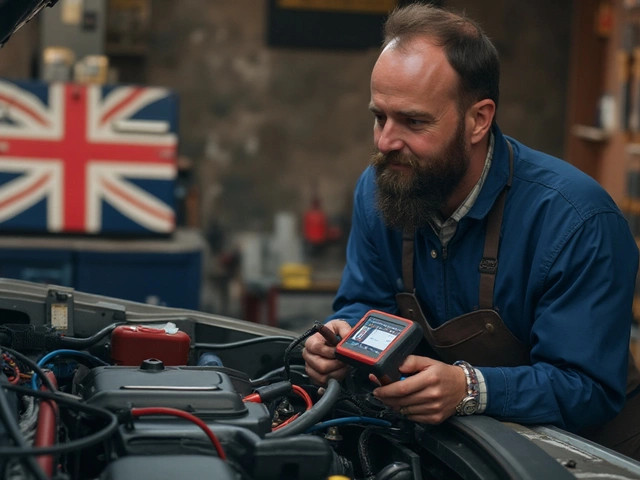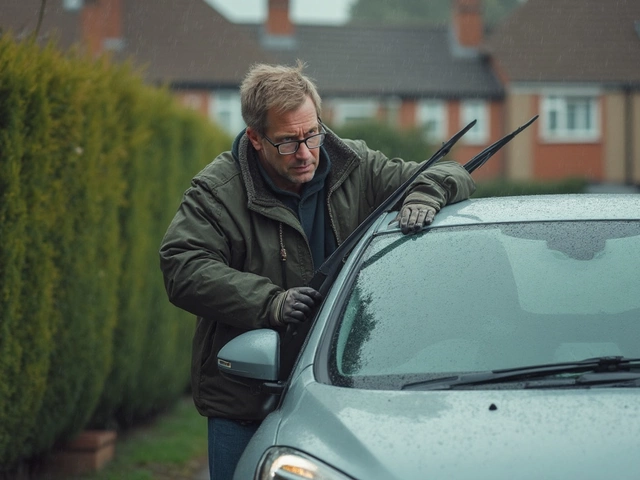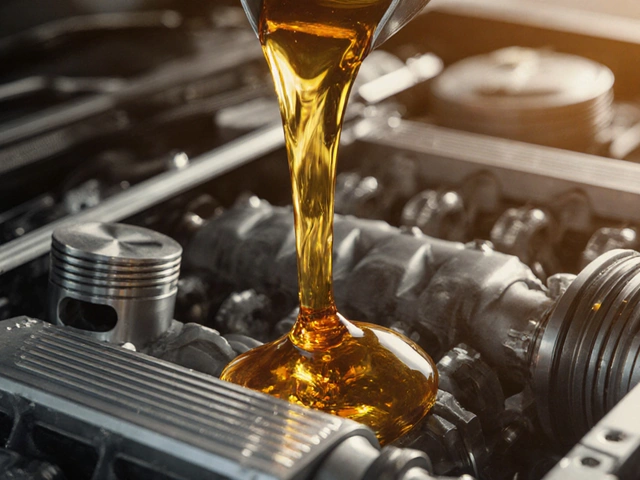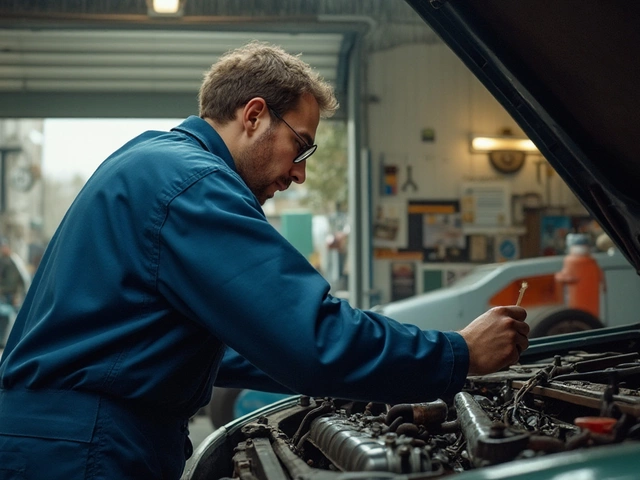Fuel pumps fail in such sneaky ways—they don’t just quit, they start causing weird symptoms: stalling at green lights, slow starting, or sudden power cuts when you hit the gas. Plenty of us have been there, scratching our heads in a parking lot. The first thing most people want to know: can you just run into AutoZone and have someone test your fuel pump on the spot?
The short answer: not exactly. AutoZone does offer help with all kinds of engine warning lights and battery issues, but when it comes to actually testing a fuel pump, it’s not as simple as plugging in a scanner. There’s a lot of confusion here, because AutoZone is famous for free code scans—so folks hope that means they’ll slap some gadget on your fuel system too. If only it were that easy.
Here's the deal. AutoZone team members can help you check for error codes with their free diagnostic tool. That scanner might tell you there’s a fuel pressure problem, which could point to the pump. But they can’t pull the pump out or bench-test it in the parking lot. Fuel system tests need special tools—like a fuel pressure gauge—that aren’t part of their free offerings. So if you walk in asking them to "test your fuel pump," expect to get some good advice, maybe a code read, but not the whole test you might see at a mechanic’s shop.
- How Fuel Pumps Cause Headaches
- What AutoZone Can (and Can’t) Do for You
- DIY Testing Tricks at Home
- Next Steps If You Still Have Fuel Woes
How Fuel Pumps Cause Headaches
If you've ever tried to start your car and cranked it over for what felt like forever, only for it to sputter—or worse, not fire up at all—chances are the fuel pump could be your troublemaker. This little part is the gatekeeper, sending fuel from the tank up to the engine. When it starts failing, it turns simple driving into a guessing game.
One of the most common signs is long cranking or needing to hit the key a couple of times just to start. If you notice your car stalling out at random—like when you pull away from a stop or hit the gas to merge onto the freeway—that’s a classic move by a tired fuel pump. Sometimes, you’ll feel the car hesitate or jerk when you step on it. It can also lose power uphill or under heavy loads.
Here’s the frustrating bit: lots of these symptoms overlap with other issues. Bad spark plugs, a clogged fuel filter, or even a failing sensor can make your ride act nearly the same way. But the fuel pump tends to fail more often after 100,000 miles, especially if you run low on gas a lot. Running on empty heats up the pump and kills it faster—trust me, Rufus has been stuck in the back seat more than once because I ignored that warning.
Look out for these tell-tale signs your pump might be failing:
- Sudden loss of power, especially on highways or hills
- Unusual whining sounds from the gas tank area
- Engine sputtering at high speeds
- Difficulty starting or random stalling
Don’t ignore little changes in how your car sounds or feels—fuel pump issues have a way of going from annoying to leaving you stranded fast. The sooner you check it out, the less risk you have of being stuck on the side of the road, dog and all.
What AutoZone Can (and Can’t) Do for You
People tend to walk into AutoZone thinking they can get every car problem diagnosed for free—including a bad fuel pump. That’s not really how it works. Here’s the real deal: AutoZone can’t pull your fuel pump out or hook it directly to any in-store machine to test it. They don’t crawl under your hood for in-depth repairs or use advanced diagnostic tools like a dealership or a certified mechanic would.
What they can do is offer a handful of free services that help with fuel pump troubleshooting. Most useful? Their code scanner. This tool plugs into your car’s OBD-II port (on most cars built after 1996), and reads trouble codes stored by your vehicle’s computer. Sometimes, if your fuel pump is on its last legs, the scanner will pick up codes about fuel pressure or general fuel system issues. These codes aren’t specific—they won’t say “bad fuel pump” in black and white—but they’ll point you in a direction.
AutoZone staff can also show you fuel pressure gauges available for purchase or lend them out through their Loan-A-Tool program at most stores. That means you can take the tool home and check your fuel system pressure yourself. Definitely handy if you’re a DIY type or trying to save on diagnostics bills.
Let’s break down which services you can actually expect at AutoZone, and where you’ll hit a wall:
- Free OBD-II code reading: They’ll scan your car for error codes related to the fuel system. Results might suggest a fuel delivery problem but don't confirm a failed pump.
- Loan-A-Tool program: You can borrow a fuel pressure gauge after leaving a deposit. This lets you check fuel pressure at home.
- Advice and part recommendations: Staff are trained to suggest possible next steps, show you fuel pump parts, or explain common failure symptoms.
- No fuel pump removal or direct in-store testing: They can’t pull your car apart or test parts off your vehicle. That’s strictly a mechanic or DIY home garage thing.
Ever wondered what most customers walk away with after a visit? Here’s a quick rundown:
| Service | Available at AutoZone | What You’ll Get |
|---|---|---|
| Code Scan for Fuel Issues | Yes | Error code(s) for fuel/engine problems, not a direct pump test |
| Fuel Pressure Gauge Loan | Yes | Tool to use at home, with instructions |
| Pump Bench Test (at store) | No | They do not test your pump in-store |
| Full System Diagnosis | No | Suggest you see a mechanic if further tests needed |
The bottom line: don’t expect a mechanic-style deep dive at AutoZone. Think of them as your starting point—they’ll get you headed in the right direction, but the hard diagnostics are still your job, or your mechanic’s.
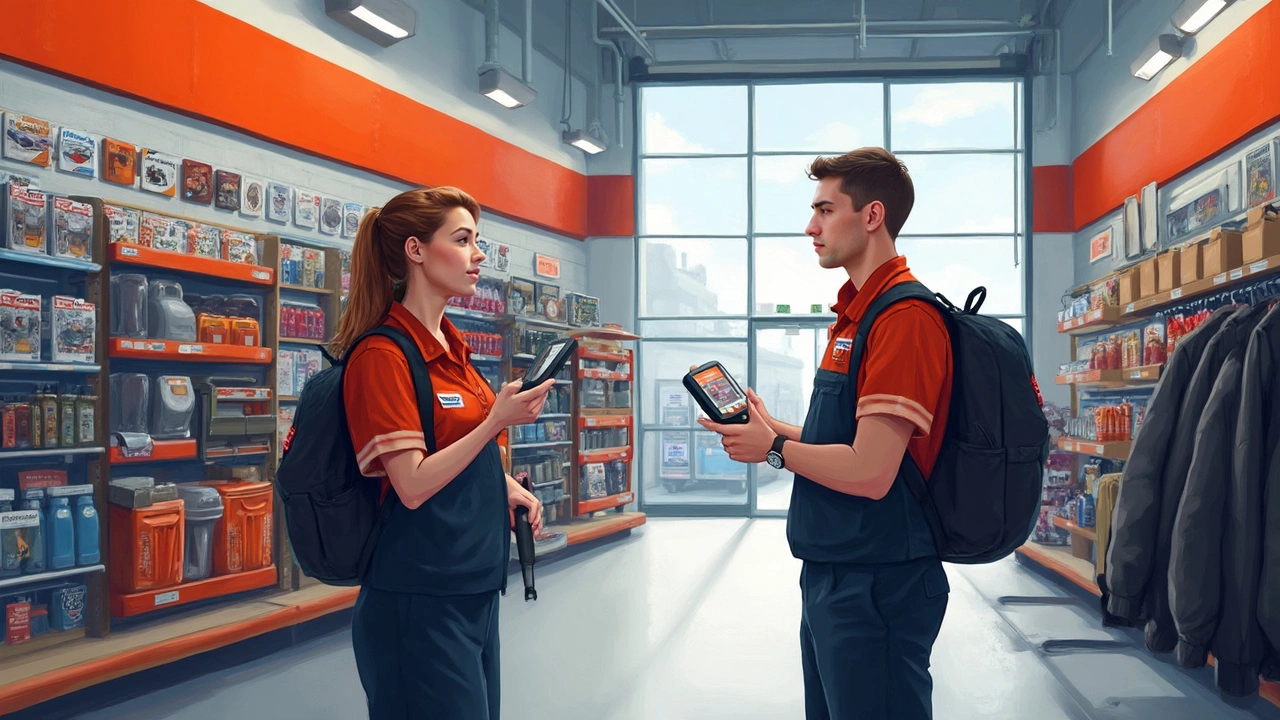
DIY Testing Tricks at Home
So, AutoZone can’t test the pump itself, but you can actually learn a lot at home—even if you’re not much of a gearhead. You just have to know where to poke around. Let’s break down a few simple tests that could save you a headache (and maybe some cash).
- AutoZone sells or rents out fuel pressure gauges. With most cars, you just connect the gauge to the test port on the fuel rail (looks like a tire valve on many models), then turn the key to the "on" position. If the needle jumps up to the spec in your owner's manual or sticker under the hood, your pump is at least building pressure.
- Listen for the classic pump “whir” when you turn the key. No sound? Double-check the fuse and relay before you panic; sometimes, it’s just an electrical hiccup.
- If you’re handy, a multimeter lets you check for voltage at the pump’s connector. Turn the key on, and you should see 12 volts for a few seconds. No voltage? The pump might be fine and the issue could be wiring or a relay.
Here's a snapshot of common fuel pressure specs for some popular models, just so you have a frame of reference if you grab a gauge:
| Car Model | Normal Fuel Pressure (PSI) |
|---|---|
| Honda Civic (2006-2011) | 40-47 |
| Ford F-150 (2004-2008) | 55-60 |
| Toyota Camry (2007-2011) | 44-50 |
| Chevy Silverado (2007-2013) | 55-62 |
If your reading is way below the numbers for your car, that means low pressure—classic fuel pump trouble. But don’t forget, a clogged filter or faulty regulator can cause similar issues. Don’t just blame the pump until you’ve double-checked those. And if all else fails, Rufus and I both say: don't be afraid to ask a buddy for help. It’s way easier than pulling your fuel tank alone.
Next Steps If You Still Have Fuel Woes
If you’ve tried the basic tests, maybe even had an OBD scanner run at AutoZone, but your car’s still giving you trouble, it’s time to dig a bit deeper. At this point, it’s smart to get serious and check some facts before spending money or throwing random parts at the problem.
First, double-check the symptoms. Here are the most common signs pointing to a bad fuel pump:
- Engine sputters at highway speeds
- Car won’t start or needs several cranks
- Loss of power under load (think merging onto a highway, car feels sluggish)
- Loud whining noise coming from the fuel tank
Still not sure? Here’s where you might want to grab a fuel pressure gauge (many auto parts stores rent them) and check the numbers yourself. Compare your readings to what your owner’s manual, online forums, or a shop manual says for your exact car. Here’s a quick cheat sheet of typical fuel pressure ranges:
| Type of Car | Normal PSI Range |
|---|---|
| Older Carbureted | 4-7 PSI |
| Modern Fuel Injection | 40-60 PSI |
| Direct Injection (newer cars) | up to 100+ PSI |
If your pressure numbers are wacky, or drop off as soon as you turn off the car, it’s a strong sign the pump or a related part (like the fuel pressure regulator) is toast.
If you’re still not confident, it’s probably time to call a professional. Shops can run more advanced tests, like volume and electronic circuit checks. Sometimes it isn’t the pump at all—it could be a bad relay, clogged filter, or even a quirky immobilizer system. Don’t be shocked if the shop charges $80 to $120 just for a full diagnosis, but it can save you from guessing wrong and dropping cash on the wrong parts.
Lastly, keep an eye out for factory recalls or warranty programs. Some car makes (especially certain Fords, Toyotas, and Hondas between 2008 and 2020) were known for fuel pump failures and may still have free fixes at the dealership. Always worth checking with your VIN at the manufacturer’s website before dipping into your pocket.


